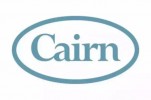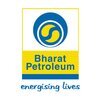Filter interviews by
Petrofac Piping Foreman Interview Questions and Answers
Petrofac Piping Foreman Interview Experiences
1 interview found

(5 Questions)
- Q1. Work experience, country name, types of work, manpower handling etc
- Q2. Punjlloyd ltd ,brouge 2 project,abudhabi
- Q3. Allkulaib int kuwait ,subiya power plant
- Q4. Dyam punjlloyd ,saudi arabia ,satrop projects
- Q5. Towell eng, oman orpic (srip extension projects)
Manpower nhandling only
Interview Preparation Tips
Interview questions from similar companies

I applied via Recruitment Consulltant and was interviewed before Oct 2022. There were 2 interview rounds.

(2 Questions)
- Q1. Piping material details pipe code
- Ans.
Piping material details include pipe code which specifies the type, size, and material of the pipe.
Pipe code is a standardized system used to identify the type, size, and material of a pipe.
Examples of pipe codes include ASTM A106 for carbon steel pipes and ASTM A312 for stainless steel pipes.
Understanding pipe codes is essential for selecting the right materials for piping projects.
- Q2. What's the cs ,ss pipe code
- Ans.
CS and SS pipe codes refer to the material specifications for carbon steel and stainless steel pipes used in piping systems.
CS pipe code typically refers to ASTM A106 for seamless carbon steel pipes or ASTM A53 for welded carbon steel pipes.
SS pipe code typically refers to ASTM A312 for seamless stainless steel pipes or ASTM A358 for welded stainless steel pipes.
CS pipes are commonly used in industrial applications, wh...

(2 Questions)
- Q1. What is your job roles
- Q2. How to manage your team

I applied via Company Website and was interviewed before Aug 2021. There were 2 interview rounds.
Technical questions.
(1 Question)
- Q1. About petrochemical operations.
Interview Preparation Tips

I appeared for an interview in Apr 2017.
Interview Questionnaire
1 Question
- Q1. How do you motivate a team
- Ans.
Motivating a team involves setting clear goals, providing support, recognizing achievements, and fostering a positive work environment.
Set clear and achievable goals for the team to work towards
Provide support and resources to help team members succeed
Recognize and reward individual and team achievements
Foster a positive work environment through open communication and collaboration
Lead by example and show enthusiasm fo
Interview Preparation Tips
Experience: We discussed about change in technology, how digitisations is impacting, social media, budgets involved, way forward and changing environment
Tips: Be thoroughly prepared in changing environment and technological updates
Duration: 45 minutes
Round: HR Interview
Experience: Attitude, behaviour, knowledge, mindset, reward and recognition , leaf by example

I applied via Monster
Interview Questionnaire
6 Questions
- Q1. 1. What is Foxboro iA series DCS ?
- Ans.
Foxboro iA series DCS is a distributed control system used in industrial automation.
It is designed for process automation and control in industries such as oil and gas, power, and chemical.
It offers advanced control strategies and algorithms for optimizing process performance.
It includes a range of hardware and software components, including controllers, I/O modules, and engineering tools.
It supports various communicat...
- Q2. 2. Features of Triconex PLC ?
- Ans.
Triconex PLC is a safety instrumented system used in critical applications.
Triconex PLC is designed for high availability and fault tolerance.
It uses triple modular redundancy (TMR) architecture to ensure safety and reliability.
It has a wide range of input/output modules and communication options.
It is used in industries such as oil and gas, chemical, and power generation.
It has features such as diagnostics, testing, a...
- Q3. 3. What is spanning tree protocol ?
- Ans.
Spanning Tree Protocol (STP) is a network protocol that prevents loops in a network topology.
STP is used to prevent broadcast storms caused by loops in a network.
It works by selecting a root bridge and disabling redundant paths to prevent loops.
STP is implemented in switches and bridges in a network.
It is defined in IEEE 802.1D standard.
STP has several variants such as Rapid STP (RSTP) and Multiple STP (MSTP).
- Q4. How different plants DCS systems are interconnected ?
- Ans.
DCS systems in different plants are interconnected through various communication protocols.
DCS systems use communication protocols like Modbus, Profibus, and Ethernet/IP to interconnect.
Interconnection allows for data sharing and control between different plant areas.
DCS systems can also be connected to other systems like SCADA and MES for higher-level control and monitoring.
Interconnection can be achieved through wire...
- Q5. Features of Siemens PLC, GE Fanuc, Alen Bradley PLC ?
- Ans.
Siemens, GE Fanuc, and Allen Bradley PLCs are programmable logic controllers used in industrial automation.
Siemens PLCs are known for their high processing speed and advanced communication capabilities.
GE Fanuc PLCs are known for their flexibility and ability to handle complex applications.
Allen Bradley PLCs are known for their user-friendly programming software and extensive support network.
All three PLCs offer a rang...
- Q6. What are the steps to be taken for work in a safety critical loop ?
- Ans.
Steps to be taken for work in a safety critical loop
Identify the safety critical loop
Define the safety requirements
Design the loop with redundancy and fault tolerance
Implement the loop with safety standards
Test the loop thoroughly
Maintain the loop regularly
Interview Preparation Tips
Skills evaluated in this interview

(2 Questions)
- Q1. How long would you abord
- Q2. What is your expectation for salaray
Interview Preparation Tips

I applied via Naukri.com and was interviewed in Sep 2023. There were 3 interview rounds.

End to end project management
(3 Questions)
- Q1. End to end project management
- Q2. Stakeholder management
- Q3. Risk Management


(1 Question)
- Q1. General questions asked
(1 Question)
- Q1. Nothing specific asked
Interview Preparation Tips

Graduate Engineer Trainee (Get) Interview Questions & Answers
Cairn Energyposted on 23 May 2017
Interview Preparation Tips
Experience: Conventional Resume Shortlisting
Round: Group Discussion
Duration: 20 minutes
Round: Technical + HR Interview
Experience: I will try and narrate the entire interview experience here. I1 refers to the technical interviewer, I2 refers to the HR interviewer and C refers to the interviewee (me)
I2: Good evening, So you interned in Schlumberger, what happened?
C: I did not get a PPO.
I2: But they came on campus, right?
C: Ya, but I did not get shortlisted.
I1 (surprised): They did not even shortlist you?
C: Initially, they did not but today morning I got a call again.
I2: Then, what happened?
C: I do not know, haven't checked the result.
I2: You did not even bother to check the result? Shows your utter disinterest in Schlumberger..
C: No, it shows my interest in Cairn India.
At this point, I2 got silenced and urged I1 to continue..
I1: So Kartik, tell us about your work in Schlumberger?
C: Explained him all the technical details, without divulging any confidential information.
I1: Can you tell me the block name?
C: No sir, I am not allowed to do so.
Please remember , questions like these are asked just to c
College Name: IIT Kharagpur
Petrofac Interview FAQs
Tell us how to improve this page.
Petrofac Interviews By Designations
- Petrofac Construction Management Interview Questions
- Petrofac Graduate Engineer Trainee (Get) Interview Questions
- Petrofac Workman/Foreman/Technician Interview Questions
- Petrofac Designer Interview Questions
- Petrofac Graduate Engineer Interview Questions
- Petrofac Instrument Engineer Interview Questions
- Petrofac QA QC Engineer Interview Questions
- Petrofac Electrical Design Engineer Interview Questions
- Show more
Interview Questions for Popular Designations
Petrofac Piping Foreman Interview Process
based on 1 interview
Interview experience
Interview Questions from Similar Companies
Fast track your campus placements
Petrofac Piping Foreman Reviews and Ratings
based on 3 reviews
Rating in categories
|
Principal Engineer
62
salaries
| ₹12 L/yr - ₹36 L/yr |
|
Senior Engineer
60
salaries
| ₹10.5 L/yr - ₹30 L/yr |
|
Senior Design Engineer
49
salaries
| ₹8 L/yr - ₹21.5 L/yr |
|
Instrument Engineer
35
salaries
| ₹10.3 L/yr - ₹25 L/yr |
|
Process Engineer
32
salaries
| ₹6.1 L/yr - ₹22 L/yr |

GAIL

Schlumberger

Saudi Aramco

Baker Hughes
- Home >
- Interviews >
- Petrofac Interview Questions >
- Petrofac Piping Foreman Interview Questions





















